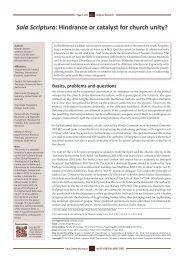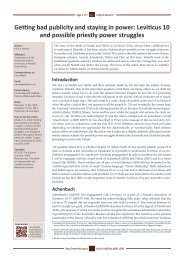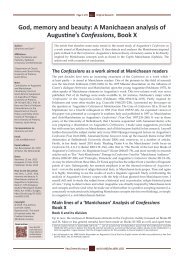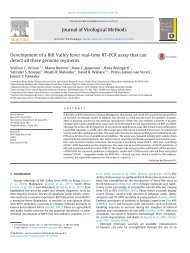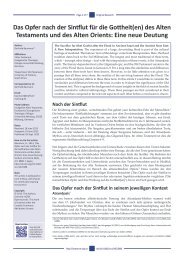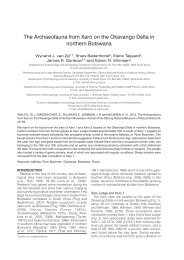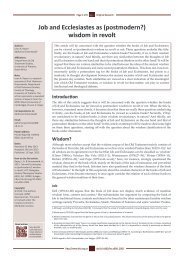View/Open - University of Pretoria
View/Open - University of Pretoria
View/Open - University of Pretoria
Create successful ePaper yourself
Turn your PDF publications into a flip-book with our unique Google optimized e-Paper software.
The individual student’s true score then would be the obtained score - (minus) 3.87 (2nd<br />
pilot done on UFS students) or 3.82 (3rd pilot done on UP and UFS students), which<br />
in each case is the standard error <strong>of</strong> measurement. Kurpius and Stafford explain that a<br />
smaller standard error <strong>of</strong> measurement reflects a smaller error score and that the goal<br />
in reliability is to control error (2006:133). A higher reliability is therefore an indication <strong>of</strong><br />
a small error <strong>of</strong> measurement. The 1st pilot <strong>of</strong> TALPS that has a reliability <strong>of</strong> 0.85, had a<br />
standard error <strong>of</strong> 4.30. When the reliability measures in subsequent pilots improved, the<br />
standard error <strong>of</strong> measurement dropped to 3.82 and 3.87, respectively, as can be seen<br />
in Table 2 below.<br />
The mean or average for all the pilots total 57.22. The variance around the mean is<br />
highest for the students at UFS with a 15.13 standard deviation. Overall, the variance<br />
around the mean for all the pilots seems to be quite stable, suggesting a normal or<br />
even distribution <strong>of</strong> scores around the mean. In the TALPS final version the standard<br />
error <strong>of</strong> measurement for the combined groups <strong>of</strong> North-West <strong>University</strong> (NWU) and the<br />
<strong>University</strong> <strong>of</strong> <strong>Pretoria</strong> (UP) students is 3.84, for North-West <strong>University</strong> (NWU) students<br />
3.83 and for <strong>University</strong> <strong>of</strong> <strong>Pretoria</strong> (UP) students 3.80.<br />
Table 2: Descriptive statistics <strong>of</strong> the TALPS pilots<br />
Pilot Mean St.Deviation SEM.<br />
1 st pilot (UP) 58.28 11.10 4.30<br />
2 nd pilot (UP & UFS) 61.33 14.19 3.82<br />
2 nd pilot (UFS) 57.38 15.13 3.87<br />
3 rd pilot (UP & UNW) 51.88 13.32 3.84<br />
One other set <strong>of</strong> empirical information about the reliability <strong>of</strong> the test yielded by the TiaPlus<br />
Test and Item Analysis is the Coefficient Alpha <strong>of</strong> the test if it had a norm length <strong>of</strong> forty<br />
items. TALPS is made up <strong>of</strong> a number <strong>of</strong> short subtests. The reliability <strong>of</strong> a test or in this<br />
case a subtest will be compromised by its length – the longer a test is, the more reliable<br />
it usually is. Kurpius and Stafford explain that when a test is too short, the reliability<br />
coefficient is suppressed due to the statistics that are employed. The Spearman-Brown<br />
correction procedure can be used to make up for this (Kurpius & Stafford, 2006:129).<br />
One example <strong>of</strong> this is the Dictionary definitions subtest in the TALPS first pilot. This<br />
section has five items and is one <strong>of</strong> the shortest sections in the test. It has a Coefficient<br />
alpha <strong>of</strong> 0.36 and GLB measure <strong>of</strong> 0.42. The Spearman Brown correction procedure<br />
indicates a Coefficient Alpha <strong>of</strong> 0.82 if it had a standard norm length <strong>of</strong> 40 items.<br />
181<br />
Journal for Language Teaching | Tydskrif vir Taalonderrig



